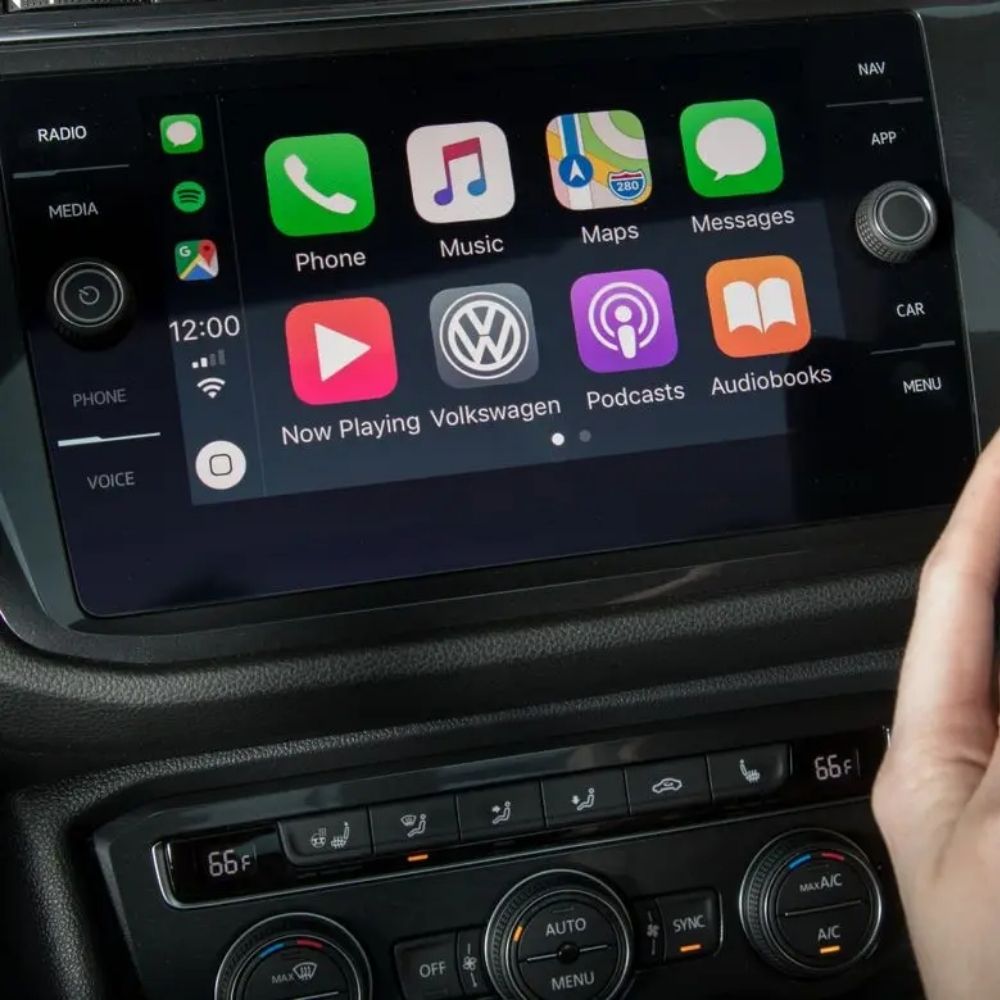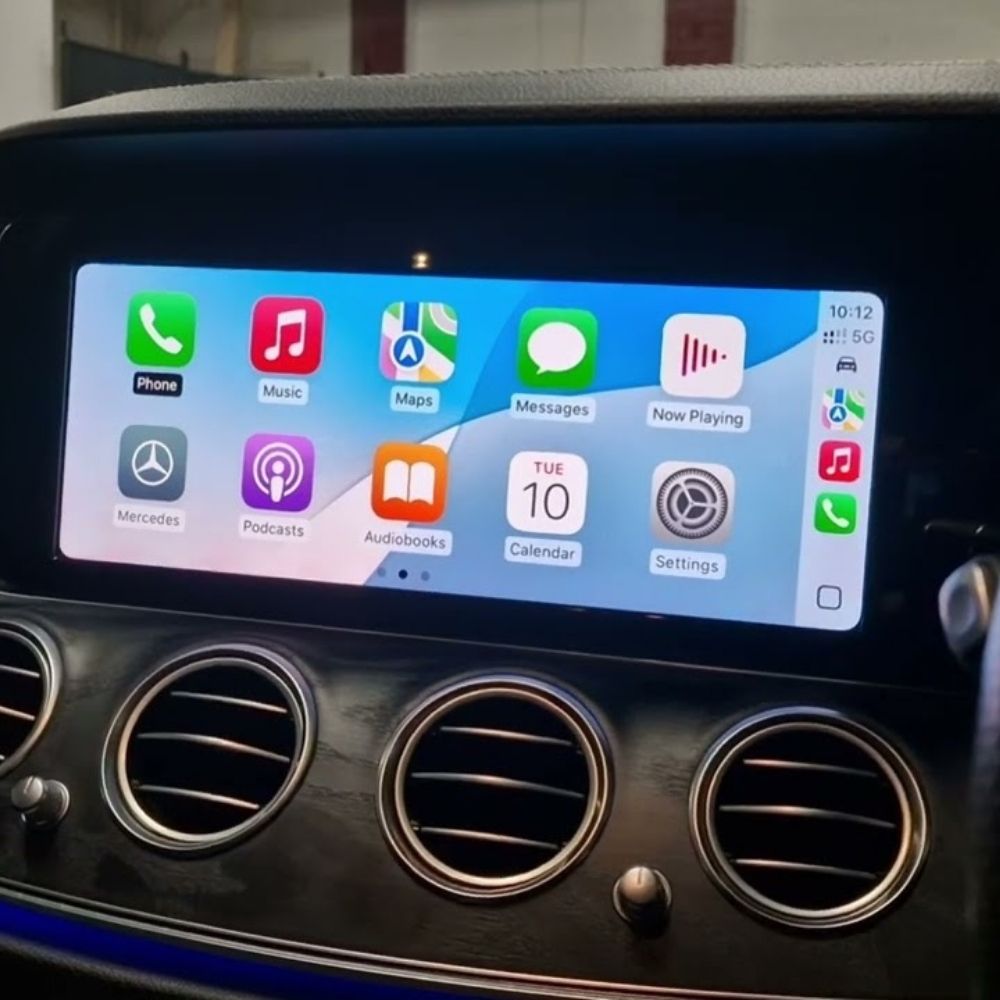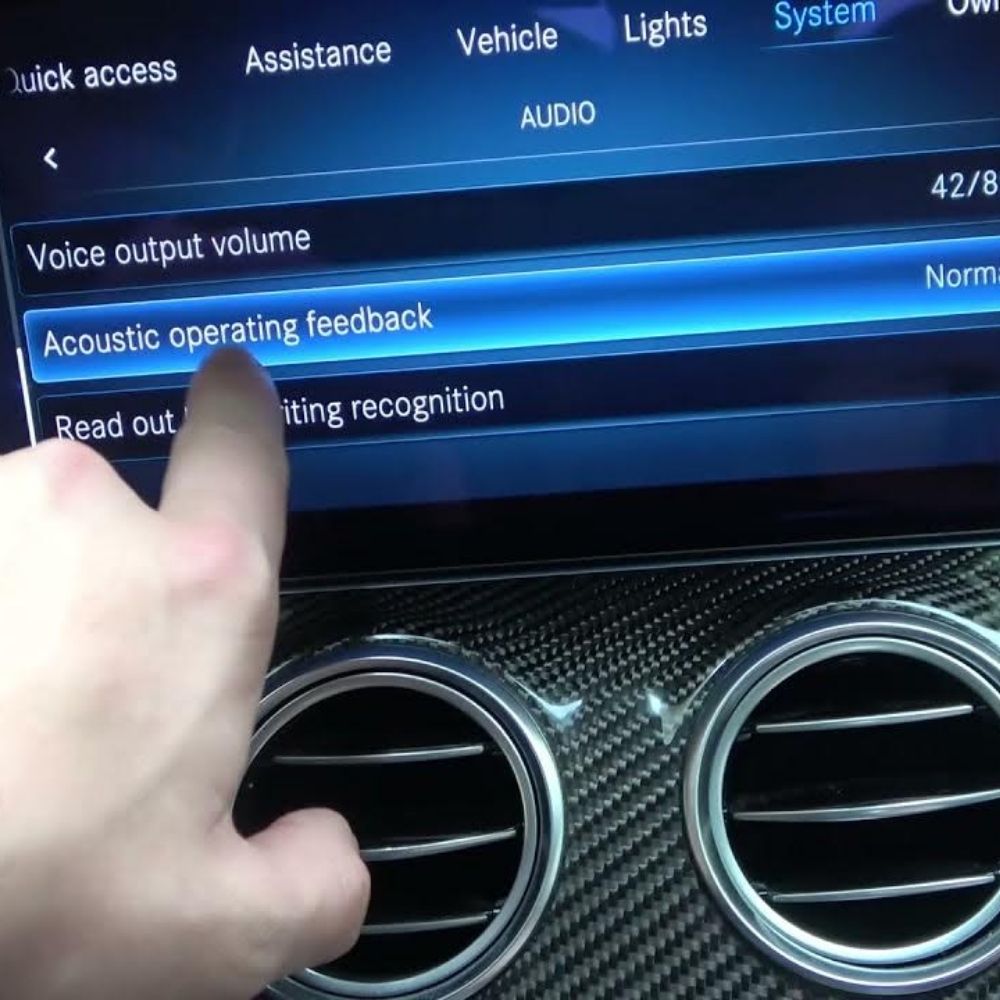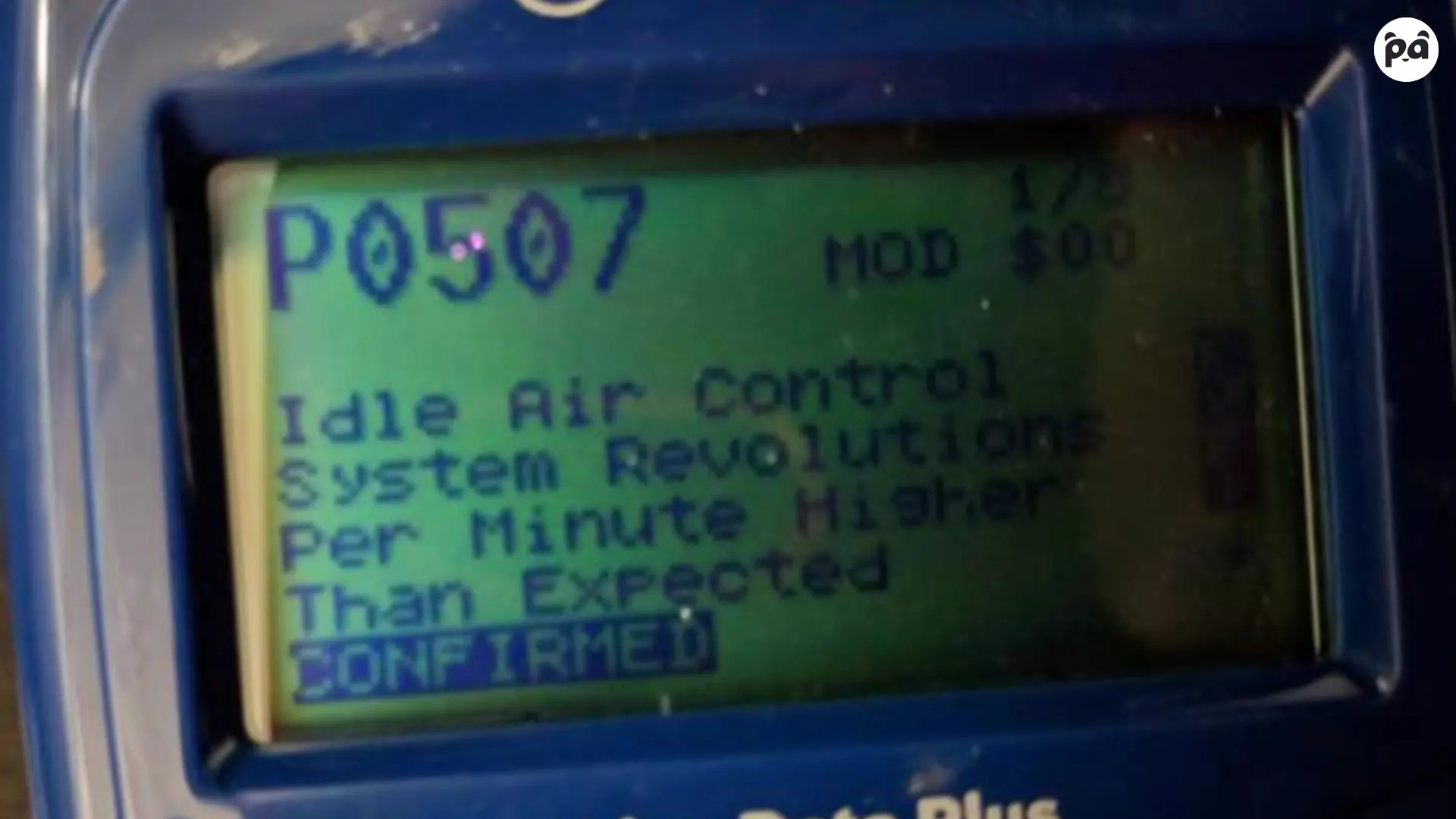
Mercedes Code P0017: Diagnosis, Causes, and Solutions
Contents
- 1. Understanding Mercedes-Benz P0017 Code
- 1.1. Decoding Crankshaft and Camshaft Positions
- 1.2. Bank 1, Sensor B: What Does It Mean for Mercedes-Benz?
- 1.3. Common Symptoms of P0017 in Mercedes-Benz Vehicles
- 2. Potential Causes of Mercedes-Benz P0017 Code
- 2.1. Timing Chain or Belt Issues
- 2.2. Camshaft or Crankshaft Sensor Problems
- 2.3. Camshaft or Crankshaft Phasers
- 2.4. Oil Control Valve (OCV) Issues
- 2.5. Low Oil Pressure
- 2.6. PCM Issues
- 3. Diagnostic Steps for Mercedes-Benz P0017 Code
- 3.1. Preliminary Checks
- 3.2. Reading and Interpreting Freeze Frame Data
- 3.3. Inspecting the Camshaft and Crankshaft Position Sensors
- 3.4. Checking the Timing Chain or Belt
- 3.5. Evaluating the Camshaft Phasers and OCVs
- 3.6. Checking Oil Pressure
- 3.7. Using an Oscilloscope for Advanced Diagnostics
- 4. Repair Procedures for Mercedes-Benz P0017 Code
- 4.1. Replacing the Camshaft or Crankshaft Position Sensors
- 4.2. Replacing the Timing Chain or Belt
- 4.3. Repairing or Replacing Camshaft Phasers and OCVs
- 4.4. Addressing Oil Pressure Issues
- 4.5. PCM Reprogramming or Replacement
- 5. Preventative Maintenance to Avoid P0017 Code
- 5.1. Regular Oil Changes
- 5.2. Inspecting and Replacing Timing Components
- 5.3. Monitoring Sensor Health
- 5.4. Maintaining Proper Oil Pressure
- 6. Advanced Diagnostic Techniques
- 6.1. Using Factory Service Manuals
- 6.2. Consulting with Mercedes-Benz Experts
- 6.3. Utilizing Online Resources and Forums
- 7. The Role of AutoExplain.com in Solving P0017 Code
- 7.1. Expert Diagnostics and Support
- 7.2. Remote Assistance via WhatsApp and Email
- 7.3. Access to a Comprehensive Database of Solutions
- 7.4. Personalized Guidance from Automotive Experts
- 8. Case Studies: Real-World Examples of P0017 Resolution
- 8.1. Case Study 1: Faulty Camshaft Position Sensor
- 8.2. Case Study 2: Stretched Timing Chain
- 8.3. Case Study 3: Oil Control Valve Failure
- 9. Frequently Asked Questions (FAQs) About Mercedes-Benz P0017 Code
- 10. Contact AutoExplain.com for Expert Assistance
Mercedes Code P0017 indicates a timing mismatch; fixing it swiftly is vital for optimal engine performance. AutoExplain.com provides expert guidance, offering solutions for diagnosing and resolving this error efficiently. This comprehensive guide dives into the intricacies of diagnostic trouble code (DTC) P0017, offering insights and expert assistance to navigate engine complications successfully.
1. Understanding Mercedes-Benz P0017 Code
The P0017 code, specifically on a Mercedes-Benz, indicates a “Crankshaft Position – Camshaft Position Correlation (Bank 1, Sensor B).” This means the Powertrain Control Module (PCM) has detected that the camshaft and crankshaft are not properly synchronized. This code is triggered when the PCM notices that the signal from the crankshaft position sensor and the camshaft position sensor on bank 1, sensor B, don’t align within a specified parameter. This sensor is responsible for monitoring the position of the exhaust camshaft. To fix this Mercedes-Benz P0017 error code quickly, AutoExplain.com delivers trustworthy solutions and guidance.
1.1. Decoding Crankshaft and Camshaft Positions
To understand the P0017 error, it’s crucial to know what the camshaft and crankshaft do.
- Camshaft: This component controls the opening and closing of the engine’s intake and exhaust valves. It ensures that the cylinders receive the correct air/fuel mixture and expel exhaust gases at the right times.
- Crankshaft: The crankshaft converts the linear motion of the pistons into rotational motion, which ultimately drives the wheels of the vehicle.
The camshaft and crankshaft must operate in perfect synchronization for the engine to function efficiently. This synchronization is maintained by the timing chain or belt. If the timing is off, even by a small amount, it can lead to significant engine problems.
 Camshaft Crankshaft Correlation
Camshaft Crankshaft Correlation
1.2. Bank 1, Sensor B: What Does It Mean for Mercedes-Benz?
The specification of “Bank 1, Sensor B” is essential for accurate diagnosis. Here’s what it means:
- Bank 1: In an engine with multiple cylinder heads (like a V6 or V8), the banks refer to each row of cylinders. Bank 1 is generally the side of the engine that contains cylinder number 1.
- Sensor B: This typically refers to the exhaust camshaft position sensor. In some engines, “Sensor A” is the intake camshaft position sensor.
Knowing this distinction helps pinpoint the exact sensor and area of the engine that needs attention. Consulting a Mercedes-Benz-specific repair manual or diagnostic resource will confirm the location of Bank 1 and Sensor B for your particular engine.
1.3. Common Symptoms of P0017 in Mercedes-Benz Vehicles
When the P0017 code is triggered, several symptoms may manifest:
- Check Engine Light: This is the most obvious sign. The Malfunction Indicator Lamp (MIL) will illuminate on the dashboard.
- Rough Running Engine: The engine may idle unevenly or stall.
- Reduced Engine Power: Acceleration may be sluggish, and the vehicle may struggle to maintain speed.
- Difficulty Starting: The engine may take longer to start than usual, or it may not start at all.
- Poor Fuel Economy: The engine may consume more fuel than normal.
- Engine Noise: Unusual noises, such as rattling or knocking, may be heard from the engine.
These symptoms can vary in severity depending on how far out of sync the camshaft and crankshaft are.
2. Potential Causes of Mercedes-Benz P0017 Code
Several factors can lead to the P0017 code on a Mercedes-Benz. Identifying the root cause is essential for effective repair.
2.1. Timing Chain or Belt Issues
The timing chain or belt is responsible for maintaining the correct relationship between the crankshaft and camshaft. If this component stretches, breaks, or jumps a tooth, it can throw off the timing and trigger the P0017 code.
- Worn Timing Chain/Belt: Over time, the timing chain or belt can stretch due to wear and tear.
- Broken Timing Chain/Belt: A complete break will cause severe engine problems and likely prevent the engine from running.
- Timing Chain/Belt Jumped a Tooth: This can happen if the chain or belt is loose or if the tensioner is faulty.
2.2. Camshaft or Crankshaft Sensor Problems
The camshaft and crankshaft position sensors provide data to the PCM about the position of these components. If either sensor is faulty, it can send incorrect information, leading to the P0017 code.
- Faulty Sensor: The sensor may fail due to electrical issues, internal damage, or contamination.
- Wiring Issues: Damaged or corroded wiring to the sensor can disrupt the signal.
- Loose Connection: A loose connection at the sensor or PCM can cause intermittent problems.
2.3. Camshaft or Crankshaft Phasers
Some Mercedes-Benz engines use camshaft phasers (also known as variable valve timing (VVT) actuators) to adjust the camshaft position for optimal performance. If these phasers malfunction, they can cause timing issues.
- Sticking Phaser: The phaser may become stuck in one position due to debris or wear.
- Faulty Solenoid: The solenoid that controls the phaser may fail.
- Oil Supply Issues: Low oil pressure or blocked oil passages can prevent the phaser from operating correctly.
2.4. Oil Control Valve (OCV) Issues
The oil control valve (OCV) regulates the oil flow to the camshaft phasers. If the OCV is not functioning correctly, it can affect the phaser’s ability to adjust the camshaft position.
- Sticking Valve: The OCV may stick due to debris or wear.
- Electrical Issues: Problems with the OCV’s wiring or solenoid can cause it to malfunction.
2.5. Low Oil Pressure
Low oil pressure can affect the operation of the camshaft phasers and OCVs, leading to timing issues.
- Worn Oil Pump: An aging oil pump may not be able to provide sufficient oil pressure.
- Oil Leaks: Significant oil leaks can reduce oil pressure.
- Clogged Oil Filter: A clogged oil filter can restrict oil flow and reduce pressure.
2.6. PCM Issues
Although less common, a faulty PCM can also trigger the P0017 code.
- Software Glitches: The PCM’s software may have errors that cause it to misinterpret sensor data.
- Internal Failure: The PCM may have internal component failures.
3. Diagnostic Steps for Mercedes-Benz P0017 Code
Diagnosing the P0017 code requires a systematic approach. Here’s a step-by-step guide:
3.1. Preliminary Checks
Before diving into more complex diagnostics, perform these initial checks:
- Check for Other Codes: Use an OBD-II scanner to check for any other trouble codes. Address any other codes first, as they may be related to the P0017 code.
- Inspect the Wiring: Visually inspect the wiring and connectors to the camshaft and crankshaft position sensors. Look for any signs of damage, corrosion, or loose connections.
- Check Oil Level and Condition: Ensure the engine oil is at the correct level and in good condition. Low or dirty oil can affect the operation of the camshaft phasers.
3.2. Reading and Interpreting Freeze Frame Data
Freeze frame data provides a snapshot of the engine’s operating conditions when the P0017 code was triggered. This information can be helpful in diagnosing the problem.
- Use an OBD-II Scanner: Connect a scanner to the vehicle’s OBD-II port.
- Retrieve Freeze Frame Data: Access the freeze frame data from the scanner.
- Analyze the Data: Look for clues such as engine speed, load, and temperature. This can help you understand the conditions under which the code was set.
3.3. Inspecting the Camshaft and Crankshaft Position Sensors
Test the sensors to ensure they are functioning correctly.
- Visual Inspection: Check the sensors for any visible damage.
- Resistance Test: Use a multimeter to measure the resistance of the sensors. Compare the readings to the manufacturer’s specifications.
- Signal Test: Use an oscilloscope to check the sensor’s signal pattern. Look for any irregularities.
3.4. Checking the Timing Chain or Belt
Inspect the timing chain or belt for wear and proper alignment.
- Visual Inspection: Remove the timing cover and inspect the chain or belt for cracks, wear, or damage.
- Alignment Check: Ensure the timing marks on the camshaft and crankshaft pulleys are aligned correctly.
- Tension Check: Verify the tension of the chain or belt. A loose chain or belt can cause timing issues.
3.5. Evaluating the Camshaft Phasers and OCVs
Test the camshaft phasers and OCVs to ensure they are operating correctly.
- Visual Inspection: Check the phasers and OCVs for any visible damage or leaks.
- Solenoid Test: Use a multimeter to test the resistance of the OCV solenoids.
- Activation Test: Use a scan tool to activate the phasers and OCVs. Listen for any unusual noises or hesitations.
3.6. Checking Oil Pressure
Verify that the engine has adequate oil pressure.
- Connect a Pressure Gauge: Connect an oil pressure gauge to the engine.
- Start the Engine: Start the engine and check the oil pressure reading.
- Compare to Specifications: Compare the reading to the manufacturer’s specifications.
3.7. Using an Oscilloscope for Advanced Diagnostics
An oscilloscope can be used to analyze the signals from the camshaft and crankshaft position sensors in detail.
- Connect the Oscilloscope: Connect the oscilloscope to the sensor signals.
- Analyze the Waveforms: Compare the waveforms to known good patterns. Look for any irregularities or misalignments.
4. Repair Procedures for Mercedes-Benz P0017 Code
Once you’ve identified the cause of the P0017 code, you can begin the repair process.
4.1. Replacing the Camshaft or Crankshaft Position Sensors
If the sensors are faulty, replace them with new ones.
- Disconnect the Battery: Disconnect the negative battery cable.
- Remove the Old Sensor: Disconnect the electrical connector and remove the old sensor.
- Install the New Sensor: Install the new sensor and connect the electrical connector.
- Reconnect the Battery: Reconnect the negative battery cable.
- Clear the Code: Use an OBD-II scanner to clear the P0017 code.
4.2. Replacing the Timing Chain or Belt
Replacing the timing chain or belt is a more complex repair that requires specialized tools and knowledge.
- Disconnect the Battery: Disconnect the negative battery cable.
- Remove Engine Components: Remove any engine components that are in the way, such as the valve cover and timing cover.
- Align Timing Marks: Align the timing marks on the camshaft and crankshaft pulleys.
- Remove the Old Chain/Belt: Remove the old timing chain or belt.
- Install the New Chain/Belt: Install the new timing chain or belt, ensuring it is properly aligned.
- Reassemble Engine Components: Reassemble the engine components.
- Reconnect the Battery: Reconnect the negative battery cable.
- Clear the Code: Use an OBD-II scanner to clear the P0017 code.
4.3. Repairing or Replacing Camshaft Phasers and OCVs
If the camshaft phasers or OCVs are faulty, they may need to be repaired or replaced.
- Disconnect the Battery: Disconnect the negative battery cable.
- Remove the Old Component: Remove the faulty phaser or OCV.
- Install the New Component: Install the new phaser or OCV.
- Reconnect the Battery: Reconnect the negative battery cable.
- Clear the Code: Use an OBD-II scanner to clear the P0017 code.
4.4. Addressing Oil Pressure Issues
If low oil pressure is the cause of the P0017 code, address the underlying issue.
- Check for Oil Leaks: Inspect the engine for any oil leaks and repair them.
- Replace Oil Filter: Replace the oil filter to ensure proper oil flow.
- Replace Oil Pump: If the oil pump is worn, replace it with a new one.
4.5. PCM Reprogramming or Replacement
If the PCM is faulty, it may need to be reprogrammed or replaced.
- Reprogram the PCM: Use a specialized scan tool to reprogram the PCM with the latest software.
- Replace the PCM: If reprogramming is not possible, replace the PCM with a new one.
5. Preventative Maintenance to Avoid P0017 Code
Preventing the P0017 code involves regular maintenance and care.
5.1. Regular Oil Changes
Regular oil changes with the correct type of oil are essential for maintaining proper oil pressure and lubricating the engine components.
5.2. Inspecting and Replacing Timing Components
Periodically inspect the timing chain or belt and replace it according to the manufacturer’s recommendations.
5.3. Monitoring Sensor Health
Regularly check the condition and performance of the camshaft and crankshaft position sensors. Replace them if they show signs of wear or malfunction.
5.4. Maintaining Proper Oil Pressure
Ensure the engine has adequate oil pressure by checking for leaks, replacing the oil filter, and addressing any issues with the oil pump.
6. Advanced Diagnostic Techniques
For complex cases, consider these advanced techniques:
6.1. Using Factory Service Manuals
Refer to the factory service manual for your specific Mercedes-Benz model. The manual provides detailed diagnostic procedures and specifications.
6.2. Consulting with Mercedes-Benz Experts
If you’re unsure about any aspect of the diagnosis or repair, consult with a Mercedes-Benz expert or technician.
6.3. Utilizing Online Resources and Forums
Online resources and forums can provide valuable information and insights from other Mercedes-Benz owners and technicians.
7. The Role of AutoExplain.com in Solving P0017 Code
AutoExplain.com offers expert assistance for diagnosing and resolving the P0017 code on Mercedes-Benz vehicles. With years of experience and in-depth knowledge, AutoExplain.com provides comprehensive support to help you get your car back on the road.
7.1. Expert Diagnostics and Support
AutoExplain.com offers expert diagnostic services to pinpoint the exact cause of the P0017 code. Our team of experienced technicians can guide you through the diagnostic process and provide detailed repair instructions.
7.2. Remote Assistance via WhatsApp and Email
AutoExplain.com provides remote assistance via WhatsApp and email to help you troubleshoot the P0017 code. Whether you’re a seasoned mechanic or a DIY enthusiast, our team can provide the support you need to get the job done.
7.3. Access to a Comprehensive Database of Solutions
AutoExplain.com has a comprehensive database of solutions for the P0017 code on Mercedes-Benz vehicles. Our database includes detailed repair procedures, technical specifications, and troubleshooting tips.
7.4. Personalized Guidance from Automotive Experts
AutoExplain.com offers personalized guidance from automotive experts to help you resolve the P0017 code. Our team can answer your questions, provide advice, and offer support every step of the way.
8. Case Studies: Real-World Examples of P0017 Resolution
Here are a few real-world examples of how the P0017 code was resolved on Mercedes-Benz vehicles:
8.1. Case Study 1: Faulty Camshaft Position Sensor
- Vehicle: 2015 Mercedes-Benz C300
- Symptoms: Check engine light, rough running engine
- Diagnosis: The P0017 code was triggered. After performing a series of tests, it was determined that the camshaft position sensor on Bank 1, Sensor B was faulty.
- Resolution: The camshaft position sensor was replaced with a new one. The code was cleared, and the engine ran smoothly.
8.2. Case Study 2: Stretched Timing Chain
- Vehicle: 2012 Mercedes-Benz E350
- Symptoms: Check engine light, reduced engine power
- Diagnosis: The P0017 code was triggered. After inspecting the timing chain, it was found to be stretched.
- Resolution: The timing chain was replaced with a new one. The timing was properly aligned, and the engine ran smoothly.
8.3. Case Study 3: Oil Control Valve Failure
- Vehicle: 2018 Mercedes-Benz GLC300
- Symptoms: Check engine light, poor fuel economy
- Diagnosis: The P0017 code was triggered. After testing the oil control valve (OCV), it was found to be faulty.
- Resolution: The OCV was replaced with a new one. The code was cleared, and the engine ran smoothly.
9. Frequently Asked Questions (FAQs) About Mercedes-Benz P0017 Code
Here are some frequently asked questions about the P0017 code on Mercedes-Benz vehicles:
- What does the P0017 code mean on a Mercedes-Benz?
The P0017 code indicates a “Crankshaft Position – Camshaft Position Correlation (Bank 1, Sensor B).” This means the PCM has detected that the camshaft and crankshaft are not properly synchronized.
- Can I drive my Mercedes-Benz with the P0017 code?
It’s not recommended to drive your Mercedes-Benz with the P0017 code, as it can cause further damage to the engine.
- How do I fix the P0017 code on my Mercedes-Benz?
The fix depends on the cause of the code. Common solutions include replacing the camshaft or crankshaft position sensors, replacing the timing chain or belt, and repairing or replacing camshaft phasers and OCVs.
- How much does it cost to fix the P0017 code on a Mercedes-Benz?
The cost varies depending on the cause of the code and the repair required. Replacing a sensor may cost a few hundred dollars, while replacing a timing chain or belt can cost thousands.
- Can low oil level cause the P0017 code?
Yes, low oil level can cause the P0017 code, as it can affect the operation of the camshaft phasers and OCVs.
- Is it safe to replace the timing chain myself?
Replacing the timing chain is a complex repair that requires specialized tools and knowledge. If you’re not experienced, it’s best to leave it to a professional.
- How often should I change my engine oil?
You should change your engine oil according to the manufacturer’s recommendations, typically every 5,000 to 10,000 miles.
- Can a faulty PCM cause the P0017 code?
Yes, although less common, a faulty PCM can also trigger the P0017 code.
- How do I check the timing chain alignment?
You can check the timing chain alignment by aligning the timing marks on the camshaft and crankshaft pulleys.
- Where can I get help diagnosing and repairing the P0017 code on my Mercedes-Benz?
AutoExplain.com offers expert assistance for diagnosing and resolving the P0017 code on Mercedes-Benz vehicles.
10. Contact AutoExplain.com for Expert Assistance
If you’re struggling with the P0017 code on your Mercedes-Benz, don’t hesitate to contact AutoExplain.com for expert assistance. Our team of experienced technicians can provide the support you need to get your car back on the road.
- Office Address: 4590 Angus Road, New York, United States
- WhatsApp: +1(936)2896695
- Email: [email protected]
- Website: AutoExplain.com
At AutoExplain.com, we understand the complexities of modern automotive systems. Our goal is to provide you with the knowledge and support you need to tackle even the most challenging diagnostic and repair issues. Contact us today, and let us help you resolve the P0017 code on your Mercedes-Benz.
The P0017 code on a Mercedes-Benz can be a frustrating issue, but with the right knowledge and tools, it can be resolved effectively. Whether you’re a seasoned mechanic or a DIY enthusiast, following the diagnostic steps and repair procedures outlined in this guide will help you get your car back on the road. And remember, AutoExplain.com is always here to provide expert assistance and support. Don’t let the P0017 code keep you stranded. Contact us today, and let us help you get your Mercedes-Benz running smoothly again.


How to activate Apple Carplay on Mercedes?

How to Activate Mercedes Key Left in Car Warning with DTS Monaco







